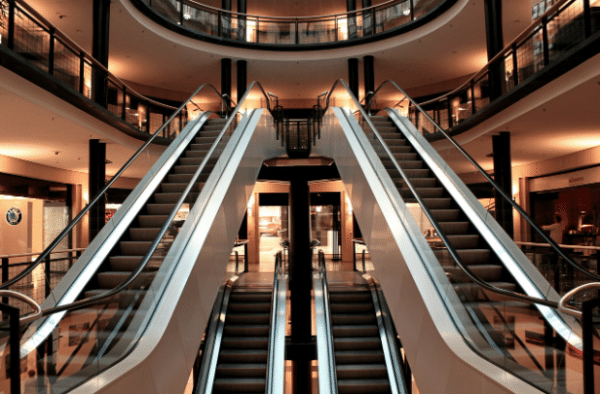As we go about our daily lives, stairs are often taken for granted. We use them to climb up and down buildings without much thought. However, have you ever stopped to consider the importance of commercial stairs in our society? Whether it’s a small local business or a towering skyscraper, stairs play a crucial role in ensuring safe and efficient movement within these structures.
Commercial stairs not only serve as a means of transportation but also contribute to the overall aesthetics and design of a building. They are an essential component of any commercial space and require careful planning and construction.
In this blog post, we will discuss 8 reasons why commercial stairs matter and why they should not be overlooked in the design and construction process. From safety to functionality, we will explore how these structures impact our daily lives and why they deserve more recognition. Let’s get started.
Safety
One of the most important reasons why commercial stairs matter is safety. As with any structure, safety should always be a top priority in the design and construction process. As highlighted by the team behind ErectaStep, there are different types of commercial stairs that cater to specific safety needs. For example, industrial stairs are designed for heavy-duty usage and often have anti-slip treads and handrails for added safety.
In addition, commercial stairs also need to comply with safety codes and regulations, ensuring that they are built to withstand heavy traffic and potential hazards. This is especially important in high-traffic areas such as shopping malls or office buildings where stairs may be constantly used by a large number of people. This makes them crucial in emergency situations, providing a safe and efficient escape route.
Efficient Movement
Commercial stairs are not just about getting from one level to another, they also play a crucial role in efficient movement within a building. Unlike elevators that may have limited capacity or be prone to breakdowns, stairs offer a reliable and speedy means of transportation between floors. They encourage physical activity and can help improve overall health for individuals who use them regularly.
Additionally, stairs can be strategically placed near entryways or key areas to encourage foot traffic and streamline movement throughout a building. In large commercial spaces, having multiple sets of stairs also helps distribute the flow of people, preventing overcrowding and potential bottlenecks.
Accessibility
Commercial stairs are designed to be accessible for all individuals, regardless of their physical abilities. They often include features such as handrails, wider treads, and tactile indicators to aid those with mobility impairments. This ensures that everyone has equal access to different levels within a building and promotes inclusivity.
Some commercial stairs may also have designated accessible routes for wheelchair users, making it easier for them to navigate the stairs safely. Ensuring accessibility in commercial stairs not only benefits individuals with disabilities but also promotes a more welcoming and inclusive environment for all building occupants.
Aesthetics
Commercial stairs not only serve a functional purpose, but they can also enhance the overall aesthetic of a building. With various materials, designs, and finishes available, stairs can be customized to match the style and branding of a business.
For example, a sleek and modern office may opt for steel or glass stairs while a luxury retail store may choose elegant marble stairs. This attention to design can make a lasting impression on visitors and contribute to the overall image and branding of a commercial space.
Branding and Image
When it comes to commercial properties, first impressions are everything. The design and appearance of a building can greatly influence how a business is perceived by potential clients and customers. Commercial stairs play an important role in creating a positive image for a business, as they are often one of the first things people see when entering a building.
A well-designed and maintained staircase can convey professionalism, and attention to detail, and even reflect the values of a company. On the other hand, neglected or poorly designed stairs can create a negative impression and may be seen as a reflection of the overall quality of the business.
Space Optimization
Commercial stairs can also help optimize space within a building. Unlike elevators or escalators that require dedicated shafts and machinery, stairs take up minimal space and can be integrated into a building’s existing design. This is especially beneficial for smaller commercial spaces where every square footage matters.
In addition, commercial stairs can serve as storage solutions by incorporating built-in cabinets or shelves underneath them. This helps maximize the use of vertical space while also providing functional storage options for businesses. Overall, utilizing stairs in a commercial setting allows for more efficient use of space and adds to the overall functionality of a building.
Code Compliance
Commercial stairs must also comply with building codes and regulations to ensure the safety of occupants. These codes outline specific requirements for stair design, such as tread width, riser height, handrail placement, and more. Following these codes not only ensures the safety of those using the stairs but also protects businesses from potential legal liabilities.
In addition, staying up-to-date with code compliance helps future-proof a commercial property and avoids costly renovations or penalties down the line. This further emphasizes the importance of considering commercial stairs during the initial planning and construction stages to ensure they meet all necessary code requirements.
Longevity and Maintenance
Commercial stairs are a long-term investment and should be designed and constructed with durability and maintenance in mind. Quality materials, proper installation, and regular upkeep can significantly extend the lifespan of commercial stairs. This not only saves businesses money in the long run but also ensures the safety of those using them.
Furthermore, incorporating features such as non-slip treads or corrosion-resistant materials can help prevent potential accidents or damage to the stairs over time. Routine inspections and maintenance also play a crucial role in identifying any issues early on and addressing them before they become more serious problems. Prioritizing the longevity and maintenance of commercial stairs is key to ensuring their functionality and safety for years to come.
There are many reasons why commercial stairs matter beyond simply providing a means of vertical transportation. From safety and efficiency to aesthetics and code compliance, these structures play a vital role in the overall functionality and image of a commercial building. It is important for businesses to carefully consider all aspects when designing and maintaining their stairs to ensure they meet the needs of both employees and visitors alike.


